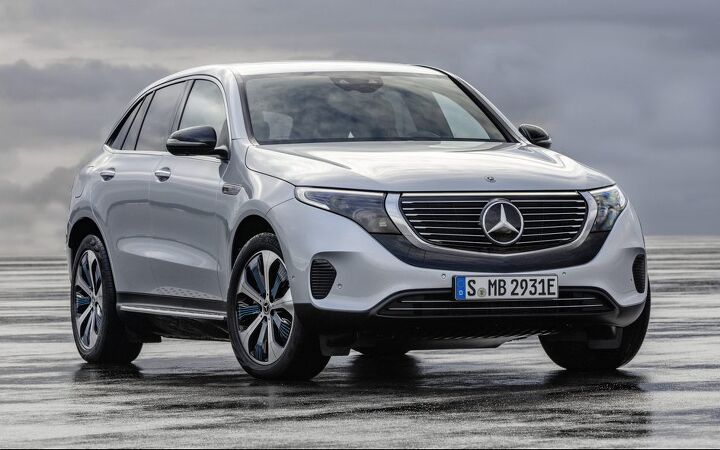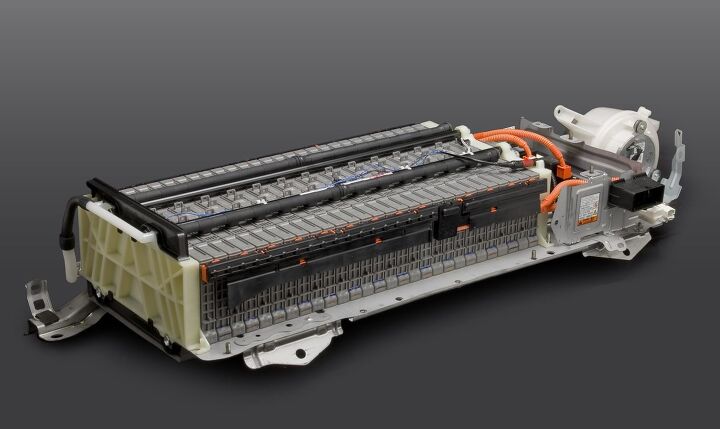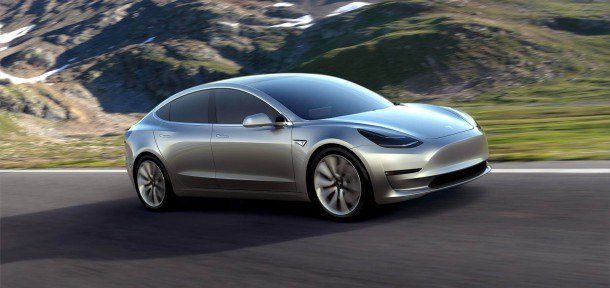#Battery
2022 Ford F-150 Lightning First Drive - Ready for Duty
The words ‘all-new’ and ‘seismic shift’ are too frequently hurled around by those who peck their way around a keyboard between visits to shrimp-laden buffet tables. Still, when the country’s best-selling vehicle – the image of which is so closely tied to America that it might as well have a baseball hat and an apple pie in its glovebox – is fitted with an entirely new method of powering its way down the freeway and around job sites, even the j-j-jaded TTAC team will sit up and take interest.
Compared to other efforts in the electric pickup truck space, such as ridiculously angular examples loudly and annoyingly defended by fanbois jihads groups of rabid admirers, the Ford F-150 Lightning actually exists in vast numbers and is actively being cranked out of a factory near Detroit. There’s no shortage of vaporware in the EV truck segment, with numerous Barnum-like companies making grandiose promises amounting to naught, taking the hopes and cash of others down along with them.
With the F-150 Lightning, Ford is definitely *not* peddling vaporware. It’s here, it’s real, and we drove several examples last week in – where else? – Texas.
GM Signs Agreement to Build Battery Processing Facility
The all-electric roadmap at General Motors continues apace. This week, the company announced plans to form a joint venture with a group called POSCO Chemical, an outfit that has nothing to do with our News & Social Media Contributor despite sharing a curiously similar surname.
GM’s plan calls for the parties to construct a facility in North America which will process critical battery materials for The General’s new Ultium electric vehicle platform. Note well: these are the gubbins planned to be used in upcoming rigs like the Lyriq and Hummer EV, not the maligned Bolt EV.
EVs Have Given Asian Suppliers Unrivaled Industrial Might
Seen by some as a moral imperative, electrification is swiftly changing the dynamics of the automotive industry. While automakers spend billions of dollars developing EVs and securing the necessary partners, many are becoming dependent on a handful of companies in Asia for the all-important battery cells needed to power the damn things. It’s gotten so serious that the U.S. government has taken an interest following a December 2019 report from the Institute for Defense Analyses that claimed battery manufacturers had taken on an “outsized importance” in the automotive sector.
It also said the United States would be at a distinct disadvantage if there are supply shortages — which is something that has already happened and is presumed to worsen as more electric vehicles flood into the market over the next few years. The automotive industry is pushing hard into electrification as governments around the world attempt to plot out an elaborate plan to supplant the internal combustion vehicle with EVs. But there are concerns that this has stacked the deck for a small number of suppliers from China, South Korea, and Japan.
With Range Comes Dominance? Daimler Strengthens Relationship With Chinese Battery Maker CATL
With practically every automaker on the planet attempting to make the electric vehicle segment work for them as well as Tesla has, they’re stepping all over each other to gain access to the components necessary to build them.
Everything from securing the raw materials for high-density cells to improving relationships with established battery suppliers will be essential for maximizing market share and embarrassing industry rivals like the little bitches they (hopefully) are. This has been especially true of German brands, who are trying to roll with increasingly demanding emission rules in Europe and China while likewise hoping to improve all-electric range and lower EV production costs.
Daimler, which already has supply deals with SK Innovation, LG Chem and Farasis, is seeking to bolster its partnership with China’s Contemporary Amperex Technology Ltd. (CATL) to address some of the challenges listed above. Mercedes-Benz wants to launch its EQS luxury electric sedan using CATL cells in 2021 — ideally with at least 435 miles of range per charge. While Daimler uses Worldwide Harmonized Light Vehicle Test Procedure (WLTP) metrics that typically average lower when assessed by the U.S. regulators, the proposed target remains enviable.
Piston Slap: Unfit to Charge a Fit?
TTAC regular Ronnie Schreiber writes:
Sajeev,
Tonight, while driving on the interstate, the tire pressure warning light came on in my ’15 Honda Fit, then the ESC light came on, then the power steering warning light came on, and then the info display said to check the charging system. Everything seemed to be working just fine, though. I pulled off to check the serpentine belt, which was intact so I started searching on the internet for the symptoms.
According to the forums, it’s sort of a known problem that’s due to glitches in the electrical system causing erroneous fault codes. Dealers usually try replacing the alternator, which doesn’t help. The alternator harness, the ABS sensors, and the injectors/coil packs have all been mentioned in the forums as fixing the problem.
I’ll check all the connections in the morning, but in the meantime I’m leaning towards a faulty ABS sensor, since those are used for the TPMS in my car, not an actual pressure transducer, and the first light that goes on is for tire pressure. Also, the check charging system warning was intermittent.
What do you think?
Amped in Alabama: Mercedes Breaks Ground for Battery Plant
Last year, Mercedes-Benz committed to a Tuscaloosa treat in the form of a billion-dollar upgrade to its existing Deep South facility. Details have surfaced on how that cheddar will be spent, including the construction of a new battery factory for the company’s future EV endeavors.
Mercedes has been entrenched into Alabama for about 20 years now, making SUVs and crossovers that are both sold here and exported to other markets. With this investment in electrification, there’s every chance they’ll be in the area for another two decades.
2018 Nissan Leaf SL First Drive - Powering Back From Obsolescence
The previous-generation all-electric Nissan Leaf (technically “LEAF,” but that acronym sends my MacBook Air into a snit befitting Peter Frampton), with toenail clippings for headlights and a face only a mother could slug, has historically done very well for itself, selling well over 100,000 units in America since its introduction eight long model years ago.
For 2018, the Japanese automaker set out to prove an all-electric car doesn’t have to look like a science experiment. In the past, new models were denoted by the holy trinity of longer, lower, and wider. In the EV sphere, that trio takes the form of longer (range), lower (charge times), and wider (infotainment screens).
Original Hybrid Batteries Still Charged Up 15 Years Later
Many industry reporters and enthusiasts attached stigma to early mass market hybrids because of the unknown reliability of their batteries. Potential owners worried that a failed battery would stick them with an expensive, out-of-warranty repair bill.
The first generation of hybrid vehicles hit the streets right around the turn of the century, right at the same time the domestic market was in love with SUVs. Anecdotes abounded about how dangerous and expensive hybrids would be to fix and maintain. Now that they’ve been on the road for over a decade, data shows — for the most part — there was no reason to fear these electrified fuel sippers.
Musk Cracks the Whip on Tesla Production, Experts Say 'Get Real'
Everyone and their 90-year-old great aunt knows that Tesla is putting all of its might into reaching a volume target of 500,000 vehicles in 2018, but more voices are now calling CEO Elon Musk’s timeline impossible.
Musk wants high-volume production to start in less than two years, but suppliers tell Reuters that the accelerated target is a pipe dream. Will delays in parts sourcing and other nitty-gritty issues throw cold water on Tesla’s plans (and customers’ Model 3 ownership dreams)?
Hold Up, Ford Wants a 200-Mile EV After All
It seems Ford didn’t want to stay home from the EV dance.
Just 10 days after Ford Motor Company electrification guru Kevin Layden said that 100 miles of range is just plenty, thank you very much, CEO Mark Fields is now saying something very different.
Can the Tesla Model 3 Break Even at $35,000? This Guy Says 'Nope'
Tesla is in the game to make money with its $35,000 Model 3, due out in late 2017, but that claim was recently disputed by an industry insider.
Jon Bereisa, an electric vehicle engineering consultant (and former General Motors systems architect responsible for the Chevrolet Volt), said recently that the Model 3 needs to be much more expensive for Tesla to break even, according to StreetInsider (via Electrek).
Don't Worry, Dyson's Got This Electric Car Thing in the Bag
The maker of all things that blow is apparently sucking up some government cash to build an electric car.
Britain’s The Guardian is reporting that Dyson is receiving a public subsidy from the British government to develop an EV, a project that will no doubt draw from the company’s depth of knowledge regarding small electric motors.
TTAC News Round-up: Investors Latest Headache for Volkswagen, New E-Class From $50K, and Dealers Surprised That You're Surprised
Investors say Volkswagen should have told the world they were cheating earlier because then they could have bought more Apple stock.
That, Mercedes-Benz prices new E-Class in Europe, BMW’s bigger i3 battery and Jeep soars in Europe … after the break!
Elon Musk, Others to CARB: Just Make VW Build EVs Faster
Tesla chief Elon Musk and more than 40 other executives called on the California Air Resources Board to release Volkswagen from its mandate to fix thousands of polluting cars in that state and instead invest that money in electric vehicles.
Musk, and other executives including Michael Brune, executive director of the Sierra Club, said regulators would more effectively reduce emissions to “cure the air, not the cars,” according to the letter:
A satisfactory way to fix all the diesel cars does not likely exist, so this solution side steps the great injury and uncertainty that imposing an ineffective fix would place on individual diesel car owners. A drawn out and partial failure of the process will only exacerbate the public’s lack of trust in the industry and its regulators. By explicit design, this proposal would achieve, in contrast, a minimum of a 10 (times) reduction in pollutant emissions as compared to a complete fix.
Piston Slap: Stumped by Starter Woes?
Bob writes:
Dear Sajeev,
I have a 1996 Nissan Pathfinder that I bought new and has since accumulated 90,000 miles . I plan on driving it until it dies because I still enjoy it and it gets me to all the great fishing spots, plus I have a “fun” car in the garage (’74 TR6) for when the weather is nice. My issue is about the starter (I think) on the Pathfinder.






























Recent Comments